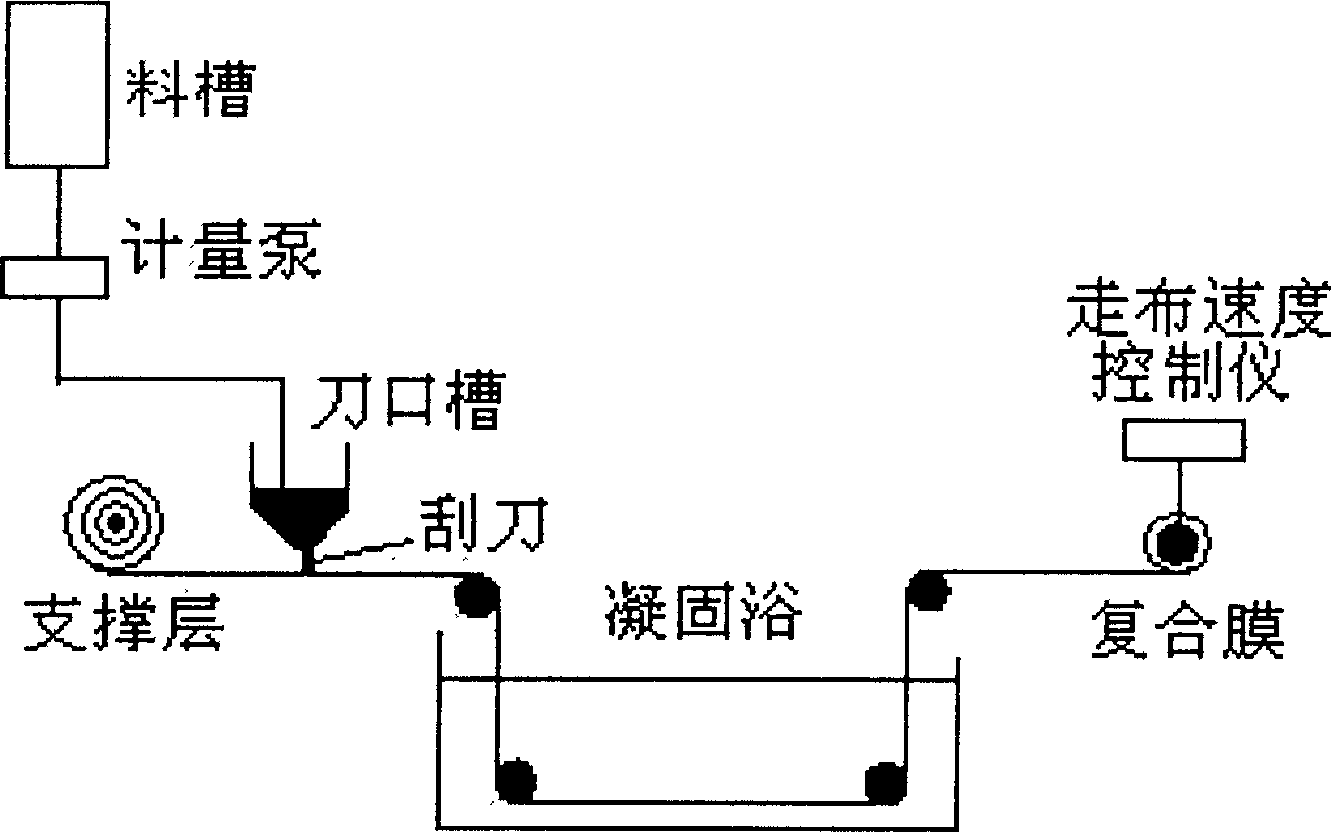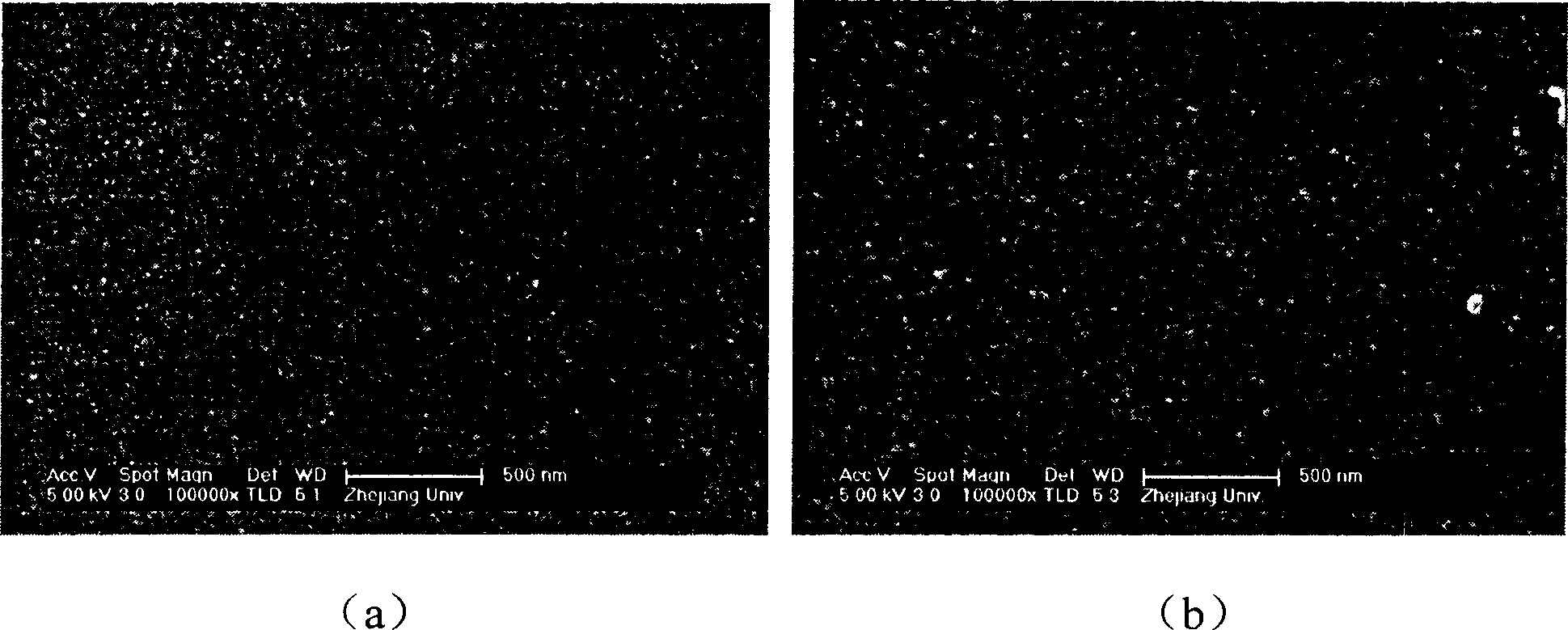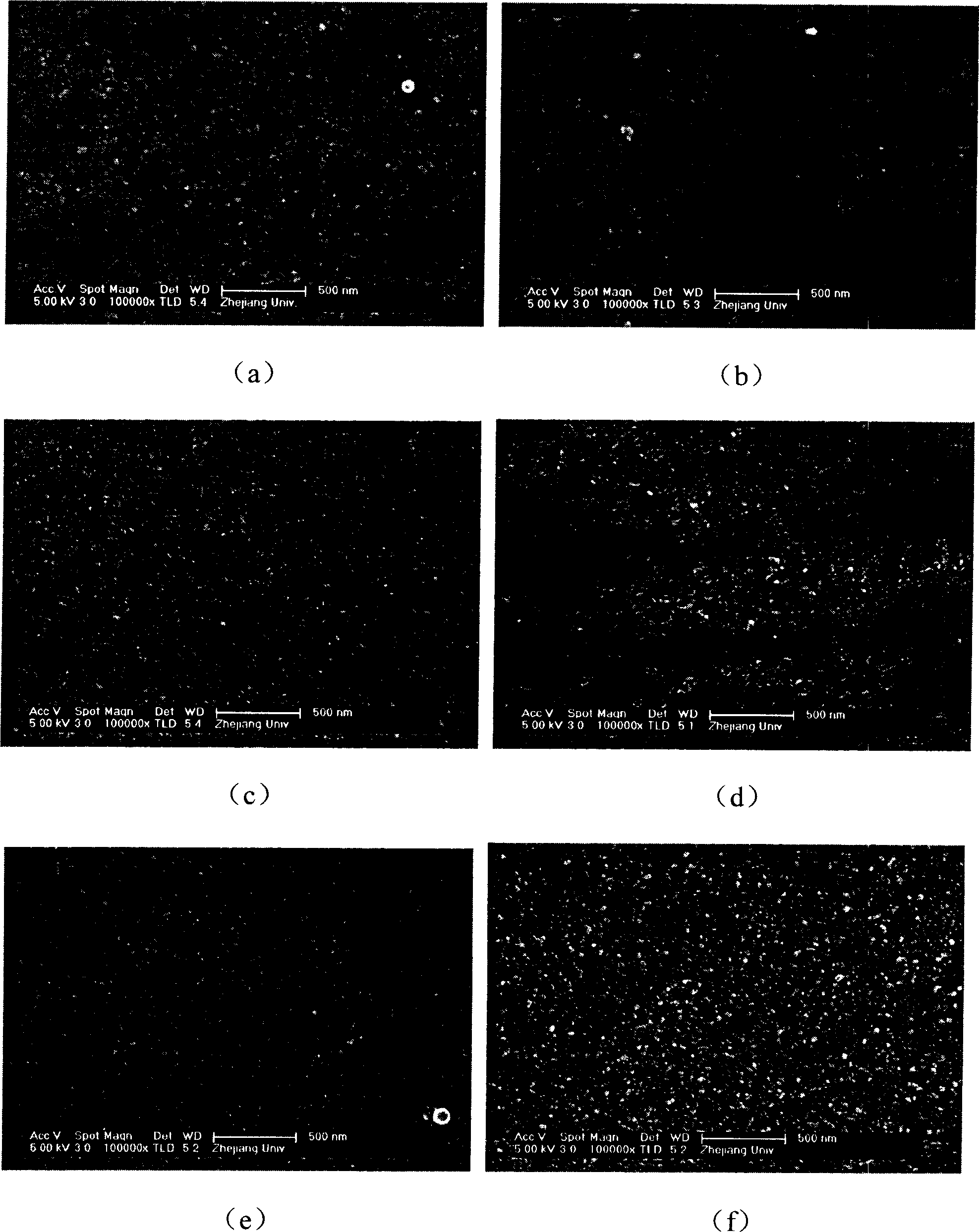Process for preparing co-mixed polyethersulfone platform complex film
A polyethersulfone and composite membrane technology, applied in the field of membrane separation, can solve the problems of low strength, high cost, and lack of membrane strength, and achieve the effects of energy saving, easy temperature, and easy industrialization
- Summary
- Abstract
- Description
- Claims
- Application Information
AI Technical Summary
Problems solved by technology
Method used
Image
Examples
Embodiment 1
[0048] Effect of polymer concentration on membrane structure and performance
[0049] The blended polyethersulfone (PES and SPES mass ratio is 4:1) / PVP / DMAc with the weight ratios of 10 / 5 / 87 and 13 / 5 / 822 respectively were fully stirred and dissolved in the flask at about 45°C for 36h, until The polymer is completely dissolved, and the solution remains clear; the above-mentioned membrane-forming solution is filtered with a Buchner funnel, then vacuum defoamed, and left to stand for use. Install the polyester non-woven fabric on the compound scraping machine, adjust the line speed controller to control the non-woven fabric's running speed to 1.5m / s; adjust the thickness of the blade between the scraper and the support layer to 150μm; the ambient temperature is 26°C , pour the film-making solution at 26°C into the feed tank, and then scrape the film. The solution is scraped on the support layer, run in the air for 5s, and then immersed in the coagulation bath at 28°C. The coagula...
Embodiment 2
[0054] Effect of solvent on membrane structure and performance
[0055] The blended polyethersulfone (PES and SPES mass ratio is 4:1) / PVP / solvent with a mass ratio of 10 / 5 / 85 was fully stirred and dissolved in a flask at about 45°C for 36 hours until the polymer was completely dissolved. The solvents are DMAc, NMP, DMF, DMSO respectively. The subsequent scraping process, water flux measurement and SEM characterization are the same as in Example 1. The thickness, average pore size and water flux of the prepared composite membranes are listed in Table 3.
[0056] Film number
Embodiment 3
[0058] Effect of PVP content on membrane structure and performance
[0059] Blended polyethersulfone (PES and SPES mass ratio is 4:1) / PVP with mass ratio of 10 / 1 / 85, 10 / 3 / 87, 10 / 5 / 85, 10 / 7 / 83, 10 / 10 / 80 / / DMAc was fully stirred and dissolved in the flask at about 45°C for 40 hours until the polymer was completely dissolved. The subsequent scraping process, water flux measurement and SEM characterization are the same as in Example 1. The measurement of the contact angle is as follows. The composite film without glycerol water treatment was dried in an oven at 80°C for 4 hours at a constant temperature, and then the contact angle was measured on a contact angle measuring instrument with three-stage distilled water by the lying drop method. Each sample was measured 8 times to get the average value. The water flux, thickness and contact angle of the prepared composite membranes are listed in Table 4. The surface morphology of various membranes is shown in the appendix image 3 ...
PUM
| Property | Measurement | Unit |
|---|---|---|
| Thickness | aaaaa | aaaaa |
| Thickness | aaaaa | aaaaa |
| Thickness | aaaaa | aaaaa |
Abstract
Description
Claims
Application Information
 Login to View More
Login to View More - R&D
- Intellectual Property
- Life Sciences
- Materials
- Tech Scout
- Unparalleled Data Quality
- Higher Quality Content
- 60% Fewer Hallucinations
Browse by: Latest US Patents, China's latest patents, Technical Efficacy Thesaurus, Application Domain, Technology Topic, Popular Technical Reports.
© 2025 PatSnap. All rights reserved.Legal|Privacy policy|Modern Slavery Act Transparency Statement|Sitemap|About US| Contact US: help@patsnap.com



